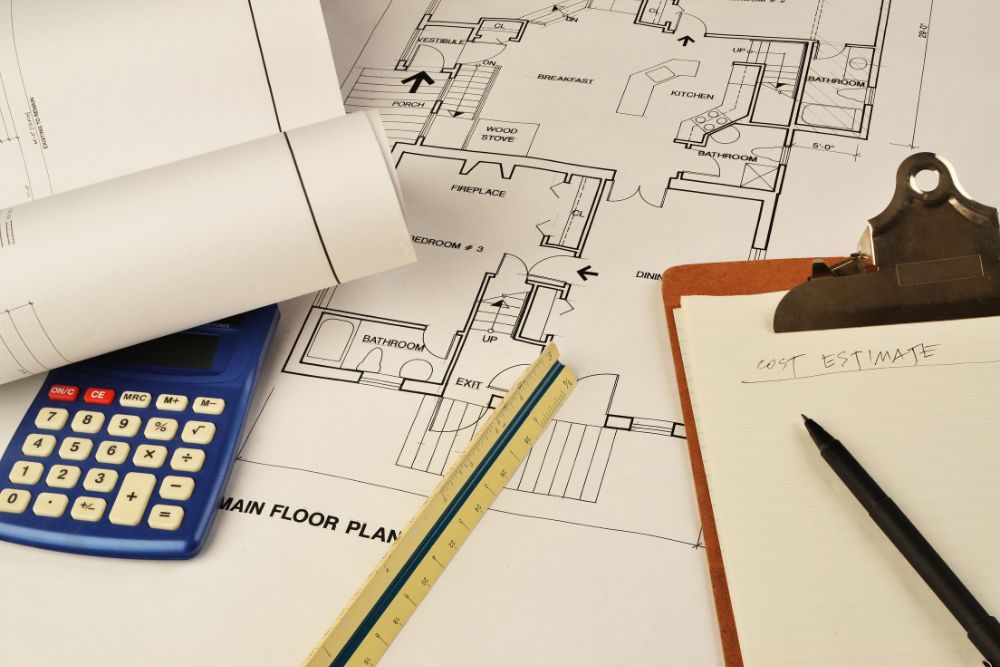For both homeowners and professionals, obtaining a precise quote is essential when it comes to flooring installation. An inaccurate estimate may result in underestimating the work or expensive overruns, which could cause losses in money. This post will discuss ten typical errors that a estimate for flooring installation makers should steer clear of in order to ensure a seamless and fruitful process.
-
Failing to Measure Accurately
One of the most frequent and expensive errors made during flooring installation estimates is inaccurate measurement. A small error in the measurements of the space might have a domino effect that results in erroneous material quantities, involving poor fitting, as well as eventually poor installation.
Measuring the length, width, as well as any irregularities or impediments that can affect the installation procedure precisely is crucial to avoiding this mistake. This includes taking into consideration built-in furniture, alcoves, bay windows, in addition to fireplaces, alongside other features that can call for precise fitting or bespoke cutting. Erroneous estimations and shortages of materials can also arise from ignoring architectural details like as baseboards, door frames, or other elements.
-
Overlooking Subfloor Preparation
One crucial error that can seriously jeopardise the effectiveness of a flooring installation operation is neglecting subfloor preparation. Since a subfloor serves as the new flooring’s base, any flaws or problems could cause the installation to fail entirely or wear down too soon.
Leveling uneven surfaces, addressing moisture concerns using moisture testing and mitigation techniques, and fixing any holes, cracks, or damage are all essential components of proper subfloor preparation. Ignoring these pre-job chores might lead to an understated budget because subfloor preparation supplies, labour, and specialty equipment can quickly add up in price.
-
Underestimating Material Waste
When installing flooring, it might be expensive to underestimate material waste. Cutting and adjusting is necessary for even the most well planned projects to account for inconsistencies, strange angles, and room patterns. Inadequate accounting for waste can lead to mid-installation material shortages, which can cause delays in project completion, extra costs for expedited purchases, and possible inconsistencies in material batches.
It’s critical to account for a fair waste limit based on the complexity of the project, the design of the rooms, and the type of flooring material in order to reduce this risk. A 10-15% allowance is often recommended by industry standards for ordinary installations; however, a higher percentage may be necessary for elaborate designs or rooms with odd shapes. Contractors and homeowners can guarantee a smooth installation process free from the headache of material shortages or unforeseen expenses by precisely calculating material waste.
-
Ignoring Additional Materials and Supplies
A supporting cast of extra materials and supplies is necessary for a successful installation, even though the main flooring material is unquestionably the star of the show. Ignoring these vital elements can result in an inaccurate estimate and unforeseen expenses that can easily blow the project’s budget.
For a smooth and durable installation, underlayment, transition strips, baseboards, adhesives, and other specialty equipment or accessories are frequently essential. If these things are not taken into consideration, the flooring may have gaps, uneven surfaces, or weakened stability. Furthermore, the financial burden may be increased if the labour costs connected with installing these extra components are overlooked.
-
Not Considering Labor Costs Accurately
An accurate evaluation of labour expenses is crucial for creating estimates for flooring installation. Based on variables including project complexity, installer expertise, and local price, labour expenses can differ significantly. Ignoring these expenses might have dire repercussions, such as financial hardship or the inclination to economise when installing the system.
More time and experience are frequently needed for complex layouts, complicated patterns, or irregularly shaped spaces, which results in greater labour expenses. In a similar vein, seasoned installers with specialised knowledge might fetch more money than less experienced personnel. Labour expenses can also vary significantly by region, with urban areas usually exacting greater fees than rural ones.
-
Failing to Account for Obstacles and Challenges
The constraints and problems that are specific to each installation site can have a substantial effect on the project’s budget and schedule. Inaccurate predictions and unanticipated delays may result from failing to take these potential obstacles into consideration. The labor expenses and time requirements associated with navigating narrow doorways, stairways, or floor vents may increase in the event that certain procedures or equipment are needed.
Complex patterns or designs can also provide difficulties because they require exacting measurements and close attention to detail, which can cause the installation process to drag on. In addition, structural problems that were not anticipated in the estimate, like uneven surfaces or hidden corrosion, might not be discovered until after installation and necessitate further repairs or modifications.
-
Overlooking Permits and Inspections
Certain permits or inspections can be necessary, depending on the project’s location and size. If these expenditures are not taken into consideration up front, there may be unanticipated charges and even legal problems.
-
Ignoring site cleanup and preparation
In flooring estimates, site preparation—moving furniture, clearing the space, etc.—and post-installation cleanup are sometimes neglected. These jobs can take a lot of time, and they might need for more workers or supplies, which would raise the entire cost.
-
Ignoring Potential Risks and Contingencies
Unexpected events might occur during any flooring installation project, including damage to pre-existing buildings, flaws in the materials, or delays brought on by inclement weather or other situations. If a contingency fund is not included in the estimate, you may be at risk from unforeseen expenses or project overruns.
-
Depending on inaccurate or outdated pricing information
The cost of labour, materials, as well as other related expenses might change over time. A project’s budget along with profitability may be at risk if an estimate is based on out-of-date or erroneous pricing data, which can cause large differences between the projected and real costs.
Conclusion
Homeowners and contractors can produce more precise as well as thorough estimates for flooring installations via Remote Estimation by avoiding these typical blunders. In addition to helping to control expectations, a well-prepared estimate guarantees a more seamless project execution by reducing unforeseen expenses in addition to a delays. Never forget that the first step to a successful flooring installation project is obtaining a comprehensive and complete quote. By taking the time to consider every facet of the task, you can prevent expensive errors and guarantee a smooth as well as fulfilling experience for all parties.




